How guitar pickups work – and what most people get wrong about them
Exploring the science behind the most important part of your electric guitar's plugged-in tone
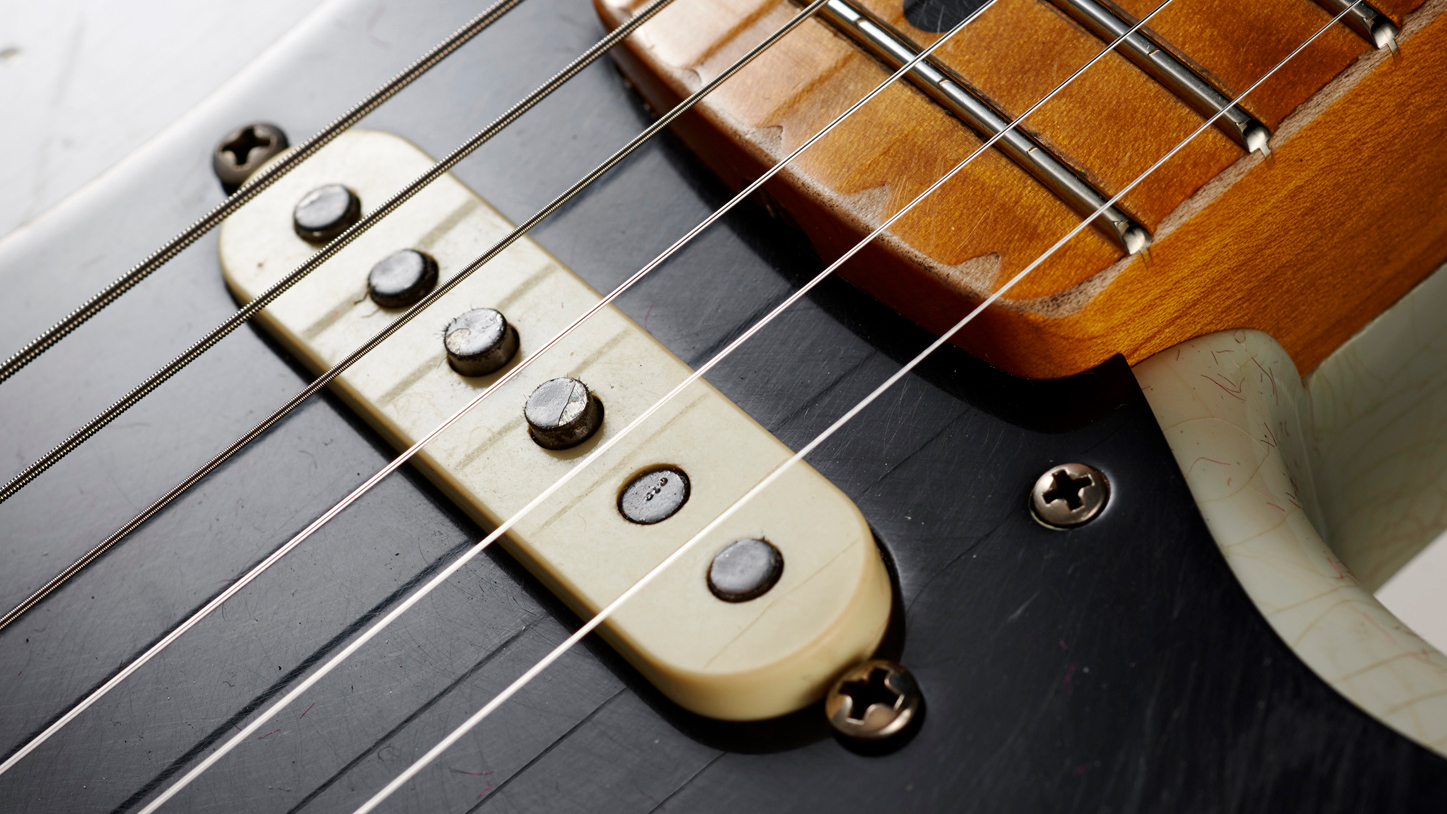
We’re currently living in something of a new golden age for pickups, with an abundance of new approaches, from high-tech multi-voice options and even bluetooth connectivity built in to the humble guitar pickup.
Elsewhere, more guitar brands are making their own pickups than ever before and we’ve had an absolute onslaught of artist signature pickup sets in recent years.
Arguably, though, many of us players still have much to learn – or remember – about the magic and mystery of the original single coil designs from the pioneering era of electric guitar design. So how do guitar pickups work?
Scott Lawing from Lawing Musical Products has a lot to say about how pickups work – and perhaps more about how they don’t. So a few years back we set him the task of answering just that question...
Hi, I’m Scott Lawing, the inventor of the Zexcoil hum-canceling pickup. We’re doing some pretty innovative things with pickup design largely because our unique platform has forced us to think out of the box.
But before I get into anything more specific to what we do, I wanted to set the record straight about something much more global: How do guitar pickups really work? I’m willing to bet it’s not how most of you think.
In the process of developing my pickup platform, I came to the realization that the single most important piece of the tonal puzzle (at least as far as pickups were concerned) is the pole piece.
All the latest guitar news, interviews, lessons, reviews, deals and more, direct to your inbox!
The reason that I was able to deduce this is that I had problems using AlNiCo magnets as pole pieces (another story), so I had to go on a hunt to find a pole piece that would “sound like” AlNiCo.
In the course of this hunt my data told me clearly what the pole piece was doing, and I even was able to build a physical model for what was happening in the pole piece that was causing these effects.
However, I had trouble reconciling this idea with the generally accepted picture (by guitarists anyway) of how pickups work. Basically, I was in the somewhat uncomfortable position of knowing how it worked, but having trouble explaining why it worked that way.
What are the key components of a guitar pickup?
An electric guitar pickup is an inductive sensor that consists, in its simplest form, of a coil of copper wire wrapped around a permanently magnetic pole piece or pole pieces. This is all held in position by a top flatwork and bottom flatwork piece (as detailed in the illustration below).
This is the architecture of some of the most important and popular pickup designs, including the conventional Stratocaster pickup.
This inductive sensor sits below a string made out of a magnetic metal. When the string vibrates, a signal is generated in the coil. It is this signal that gets amplified to create the sound of an electric guitar.
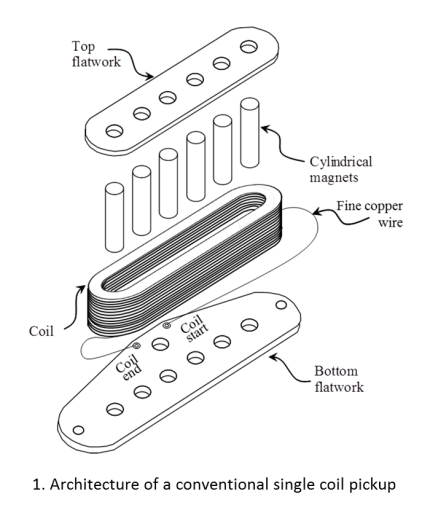
How is the signal of the pickup generated?
But how, exactly, is this signal generated? This is an inherently technical discussion, but I’ll try to explain it in as straightforward a way as I can. The most common way you’ll see the string-pickup interaction represented is from a perspective that is centered on the magnetic field of the pickup.
In this interpretation, the magnetic field of the pickup gets “disturbed” by the vibrations of the string. The metal string kind of pulls the pickup’s field around as it vibrates, causing the coil to generate a signal in response to this changing magnetic field.
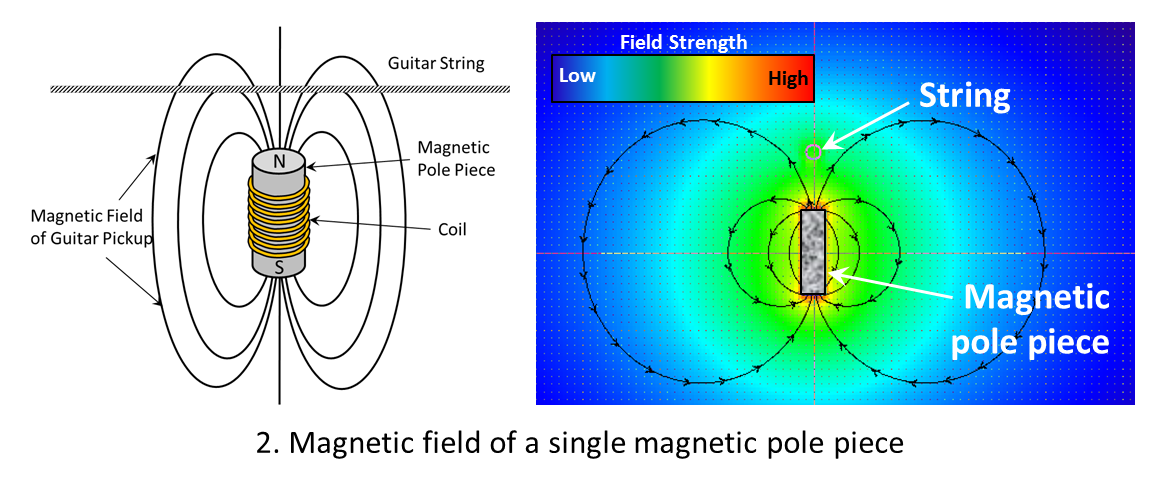
This is the perspective on pickup function that you’ll generally see in books, websites and forum posts written by pickup winders, guitar players and gear heads. Go ahead and search, “how does an electric guitar pickup work?," and this is almost all of what you’ll get, in one form or another.
It’s easy to see why, given the prevalence of this perspective, that the role of the magnetic field geometry of the pickup itself has been given so much emphasis in the discussion of pickup design, tonality and performance.
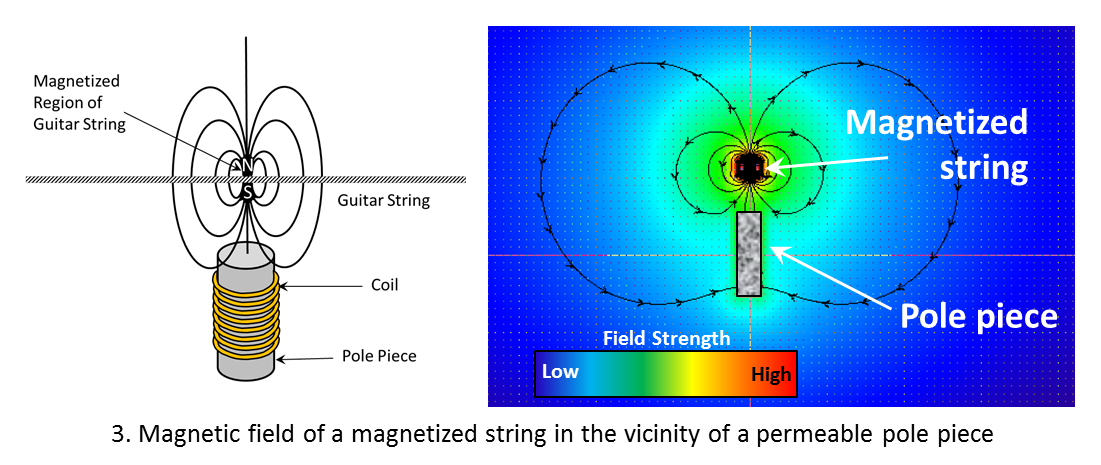
But there’s another perspective, one that is more prevalent in books about pickups written by physicists and engineers. It’s also the one put forth by the National High Magnetic Field Laboratory (but, hey what do they know, they’re just scientists)...
Is the string a magnet?
This interpretation is centered on the string itself as a magnet. The magnetic field of the pickup magnetizes the string in the region above the pole piece. When the string vibrates, it becomes a source of magnetic flux, essentially a magnet moving in the vicinity of the coil. In this model, the coil is simply a receiver of the magnetic flux being generated by the moving magnetized portion of the string.
These are two fundamentally different mechanisms of signal generation. In the first, the important part of the equation is the magnetic field of the pickup, and it’s the movement of the pickup’s own field lines that create the signal.
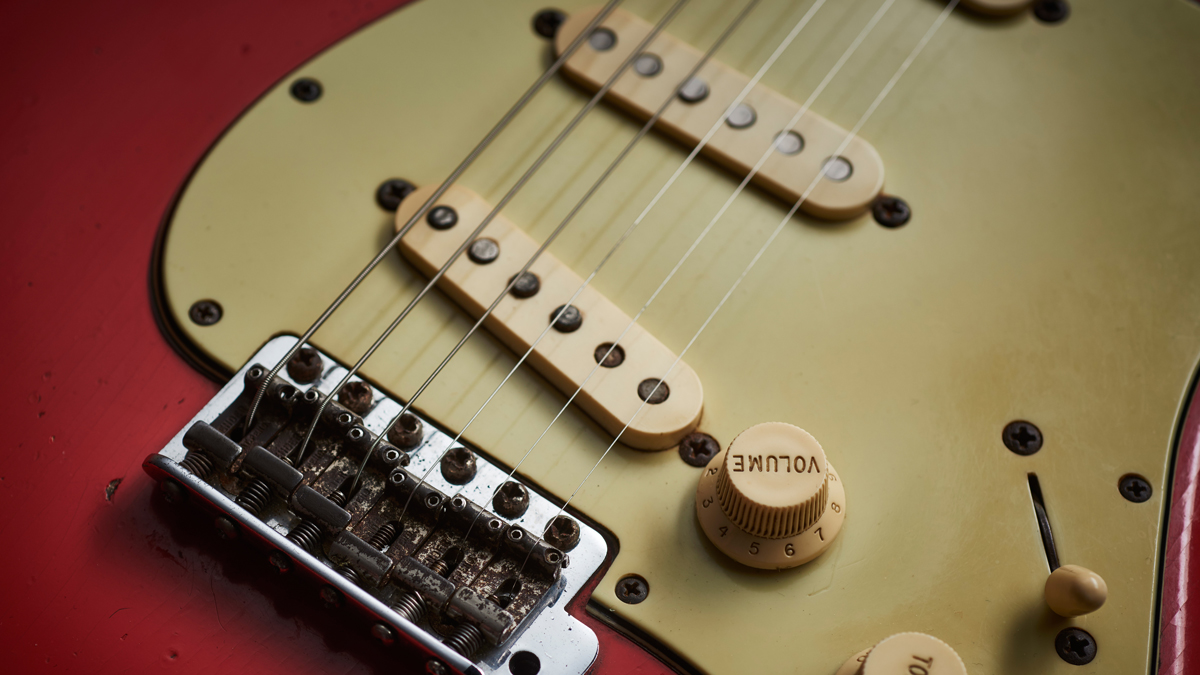
The second mechanism, where the string itself is a vibrating magnet, doesn’t really require that the pickup has a magnetic field of its own at all, as long as the string is magnetized.
But which is correct? Let’s do an experiment to find out. We built a Zexcoil pickup, complete with everything but magnets. It still has the coils, ferromagnetic pole pieces and structural elements, just no magnets and no magnetic field of its own.
We take this no magnet pickup and we suspend it above the guitar, so that it is the same distance from the strings as the magnetized pickup installed in the guitar. Then we switch between them.
What do you think happens?
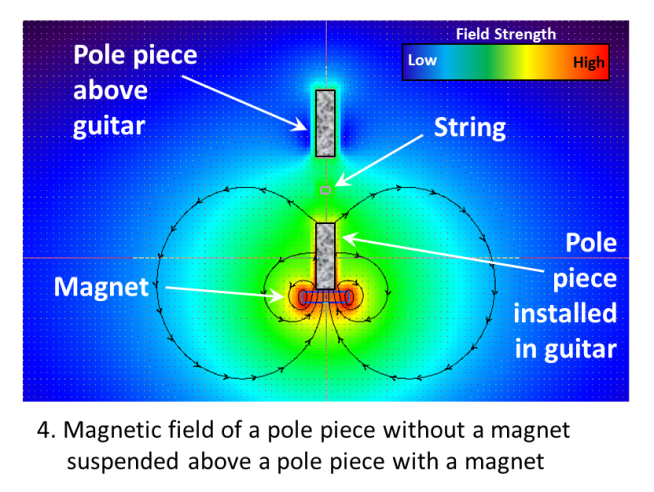
If the pickup centric model is correct, then the no magnet pickup should generate a much weaker signal than the magnetized pickup installed in the guitar since it is sitting in a region of lower magnetic field strength, as illustrated in Figure 4.
The strength of the field generated by the magnetized pickup decays rapidly with distance, and since the no magnet pickup has no field of its own, it would only be getting signal from the fluctuating field lines of the relatively distant magnetized pickup.
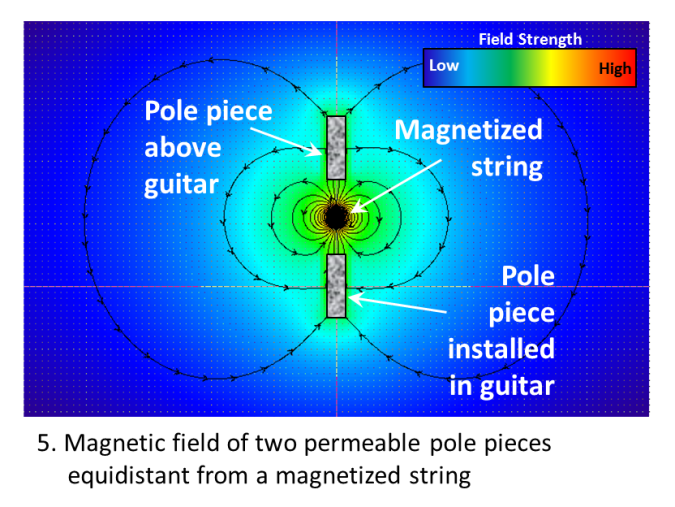
If the string centric model is correct, the signals from the two pickups would be equal in strength, as illustrated in Figure 5, since they are both equidistant from the vibrating magnetized string, the source of the magnetic flux. Watch this video for the answer...
Surprise! Much of what you thought you knew about how pickups work is wrong, or at least incomplete. The pickup with no magnet sounds exactly like the pickup with a magnet. Pickups do not need a magnet at all, they only need a magnetized string! Now of course the easiest way to magnetize the string practically is to incorporate a magnet into the pickup, so that’s why we do it that way.
The role of the pole piece
Ironically, Seth Lover, the inventor of the PAF, had these physics absolutely correct. In a 1978 interview with Seymour Duncan, Seth Lover said:
“The magnetic field comes up to the stings there and magnetizes the strings. That’s one of the things that most people don’t understand. They figure that string is waving there and cutting the magnetic lines of force. Nuts. That isn’t it.
“The magnet, all it does is magnetize the string. Now you’ve got a waving magnetic field. And we have a fixed coil with a waving magnetic field to induce voltage. If you want to, take the magnet out.
“One you’ve magnetized your strings, it will play until the string loses it. Players think the string, the magnetic field from the magnet comes up to the string and by twisting the magnetic flux back and forth that’s what induces the voltage. That’s not what happens."
Somewhere along the line though, I guess we lost the thread…
So we can see that the role of the pole piece as a magnet, as well as the role of the magnetic field generated by the pickup, has been greatly exaggerated. Our simple experiment shows that the most important function of the pole piece as a magnet is to magnetize the string, and the most important magnetic field to be concerned with is the field associated with the vibrating string, not the static field associated with the pickup itself.
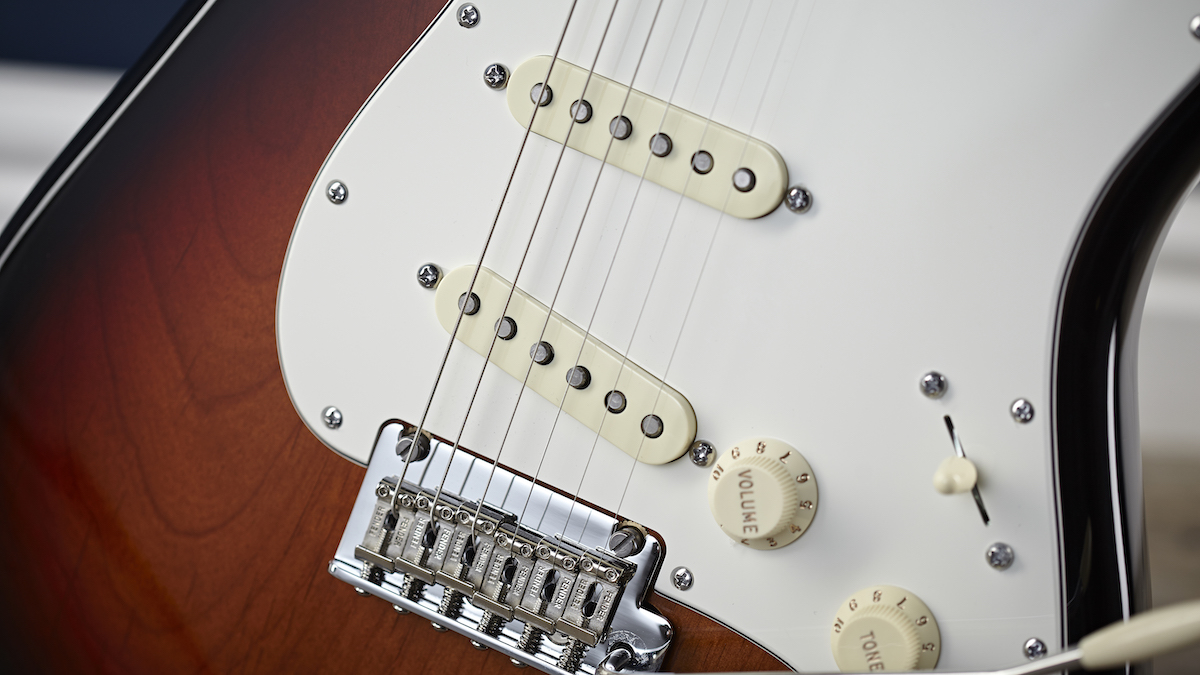
Receiving you loud and clear
In some sense, and for the purposes of this analysis, as long as the string is magnetized we can effectively neglect that the pickup encompasses a magnet at all. The most important role of the pole piece in shaping tone then, is not as a generator of magnetic field, but as a receiver of the magnetic flux radiated from the vibrating string.
In this string-centric view, the importance of the pole piece as a concentrator and filter of the magnetic flux becomes much more obvious. That’s the realization that I came to years ago, and that’s what we manipulate in our pickup designs to tailor the tone.
We engineer the pole piece, using some familiar materials but also a lot of novel and exotic metals that nobody else has thought to use, to dial in the tone exactly where we want.
That’s a lot to digest, and I’m sure some of your heads are exploding based on my shattering your pickup centric view of the magnetics, so we’ll leave it there for now and hopefully I’ll have a chance to elaborate on this in the future.
For more on the differences between classic builds, you can check out our guide to the types of guitar pickups.
Dr. A. Scott Lawing is the inventor of Zexcoil pickup technology and the technical driving force behind Lawing Musical Products. Scott has been a guitar player for over 30 years. He is also an engineer with a PhD from the Massachusetts Institute of Technology and numerous technical papers, patents and presentations to his credit. Recently, Scott has started applying his technical and creative energies to the business of musical instruments.

